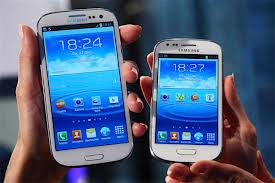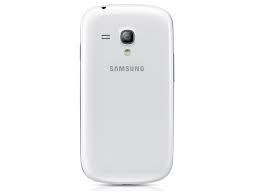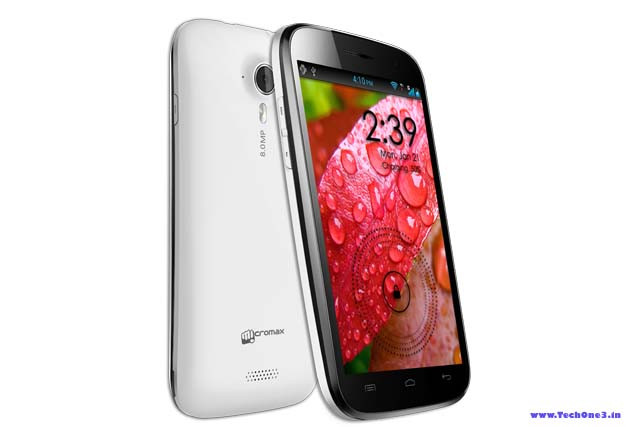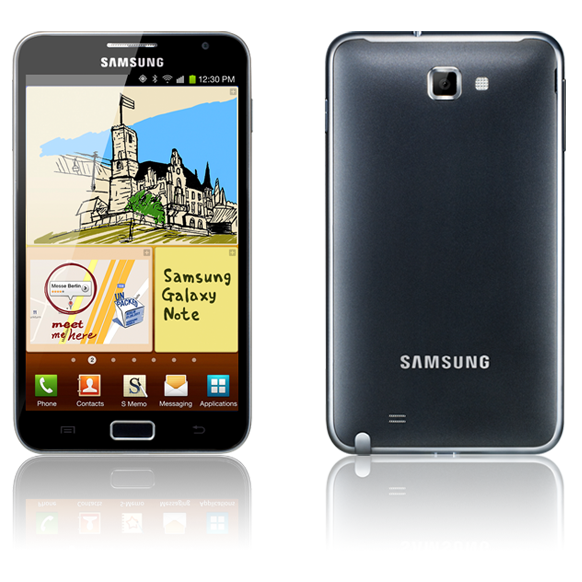Overview
The S III mini is more intriguing than your typical mid-range model, as it has the privilege of being named after one of the best and most popular Android phones around.....
The Samsung Galaxy S III mini's appearance is super-inspired by its bigger sibling, the Galaxy S III. If you don't look closely, you might even think that the S III mini is simply a shrunken version of the GS III, but that would be wrong. Thanks to some minor changes like moving the Home button a bit higher on the S III mini, Samsung has managed to achieve a more pleasing look. Overall, the handset is pretty good-looking, with its white version being perfect for women.
What's different?
Firstly, starting toward the top of both devices, the mini has a slightly more rounded appearance. Certainly, this is a side effect of its narrower shape, meaning those same curved shoulders come together more quickly, leaving less flat space between them. Below this, you'll note that the sensors and camera have moved from the right on the original Galaxy S III to the left this time around. Beneath these, the Samsung logo is actually larger than before, as is the total distance from the top of the screen to the top of the device, making the bezel taller at the extremes of the newer phone. This also gives the device a slightly more elongated feel overall when placed side by side. Curiously, it seems that Samsung also thinks smaller hands want bigger input options, as the home button is notably larger on the mini than the one on the standard GS III. Likewise, the power button on the right-hand side is slightly taller and squarer than the one on the original, which is more symmetrical.
Display
It four inches across diagonally, with a WVGA (800 x 480) resolution and a density of 233 ppi. Samsung's sticking to its Super AMOLED PenTile guns whether you like it or not, but if you're the kind of person who finds that a turn-off, you likely already lost interest somewhere in the last section. In reality, the display is adequate, and still delivers a pleasant enough experience. What it lacks in pixel density, it makes up for in brightness and color representation.measures
Processor and Memory:
The processor that Samsung has used for the Galaxy S III mini is one of the things that seemed to have pissed people off. The “problem” here is that while many expected the company to utilize its super-powerful quad-core Exynos 4412 chipset, it has instead gone with an ST-Ericsson NovaThor U8420, which is a dual-core CPU clocked at 1GHz. The GPU chip is the Mali-400MP, which packs quite a punch.
All in all, the system performance is great. The NovaThor chip is doing a wonderful job so there isn't reason to worry about performance. Now, there are some slight hints of lag scattered throughout the system, but they are just that – very slight hints that simply cannot ruin the positive impression made by the device. And as we said earlier, since you probably won't be using the S III mini as your primary computing device, why would you need a cutting-edge chipset here in the first place?
The S III mini is more intriguing than your typical mid-range model, as it has the privilege of being named after one of the best and most popular Android phones around.....
The Samsung Galaxy S III mini's appearance is super-inspired by its bigger sibling, the Galaxy S III. If you don't look closely, you might even think that the S III mini is simply a shrunken version of the GS III, but that would be wrong. Thanks to some minor changes like moving the Home button a bit higher on the S III mini, Samsung has managed to achieve a more pleasing look. Overall, the handset is pretty good-looking, with its white version being perfect for women.
What's different?
Firstly, starting toward the top of both devices, the mini has a slightly more rounded appearance. Certainly, this is a side effect of its narrower shape, meaning those same curved shoulders come together more quickly, leaving less flat space between them. Below this, you'll note that the sensors and camera have moved from the right on the original Galaxy S III to the left this time around. Beneath these, the Samsung logo is actually larger than before, as is the total distance from the top of the screen to the top of the device, making the bezel taller at the extremes of the newer phone. This also gives the device a slightly more elongated feel overall when placed side by side. Curiously, it seems that Samsung also thinks smaller hands want bigger input options, as the home button is notably larger on the mini than the one on the standard GS III. Likewise, the power button on the right-hand side is slightly taller and squarer than the one on the original, which is more symmetrical.
Display
It four inches across diagonally, with a WVGA (800 x 480) resolution and a density of 233 ppi. Samsung's sticking to its Super AMOLED PenTile guns whether you like it or not, but if you're the kind of person who finds that a turn-off, you likely already lost interest somewhere in the last section. In reality, the display is adequate, and still delivers a pleasant enough experience. What it lacks in pixel density, it makes up for in brightness and color representation.measures
So, the most interesting thing here should be the 4” screen size of the Galaxy S III mini. We have to say that we quite like it. In fact, it seems perfect for most basic stuff that one can do on a smartphone, like using the organizer features, browser, camera, etc. Well, if you are a heavy user, who plays a lot of games, or watches a lot of video, or simply uses their smartphone as their main computer, then we'd recommend getting something with a bigger screen, like the GS III or One X or Note II, but in most other scenarios, where you're using your phone as a phone, organizer, social networking device, some web browsing and the occasional game, we think the 4” display of the S III mini is big enough to provide a comfortable experience.
 4.0” AMOLED Display
4.0” AMOLED Display
This is what we call seeing reality. Its beautiful 4.0-inch Super AMOLED display offers a generous viewing experience that lets you view multimedia and Web content in brilliant colour and clarity.
 Jelly Bean OS
Jelly Bean OS
Powered by Android™ 4.1 (Jelly Bean), the latest version of the world’s most popular smartphone operating system. Jelly Bean has fast, fluid and smooth graphics along with a new Google Search™ experience featuring Google Now™, which brings you just the right information, before you even ask.
Processor and Memory:
The processor that Samsung has used for the Galaxy S III mini is one of the things that seemed to have pissed people off. The “problem” here is that while many expected the company to utilize its super-powerful quad-core Exynos 4412 chipset, it has instead gone with an ST-Ericsson NovaThor U8420, which is a dual-core CPU clocked at 1GHz. The GPU chip is the Mali-400MP, which packs quite a punch.
All in all, the system performance is great. The NovaThor chip is doing a wonderful job so there isn't reason to worry about performance. Now, there are some slight hints of lag scattered throughout the system, but they are just that – very slight hints that simply cannot ruin the positive impression made by the device. And as we said earlier, since you probably won't be using the S III mini as your primary computing device, why would you need a cutting-edge chipset here in the first place?
The Galaxy S III mini comes with 1 GB of RAM, which is a standard amount even for high-end smartphones nowadays. While we were testing the phone, we did not encounter any visible slowdowns.
Internal storage is yet another area where the Samsung Galaxy S III mini performs admirably. Coming in 8GB and 16GB flavors, not only does the mini have plenty of built-in storage, but it also features a microSD card slot, which can read cards of up to 32 GB, so storage space won't really be an issue with this device.
Samsung Galaxy S3 mini Specifications
- 4.0-inch WVGA(480×800) capacitive touch screen display
- 1 GHz dual-core processor
- Android 4.1 (Jelly Bean) OS
- 9.85 mm thick and weighs 111.5 g grams
- 5MP Auto Focus Camera with LED Flash, 720p video recording and VGA secondary camera
- FM radio with RDS, 3.5mm audio jack
- 1GB RAM, 8 GB / 16GB internal memory, expandable up to 32GB with microSD
- 3G (HSDPA: 14.4 Mbps, HSUPA: 5.76Mbps), Wi-Fi 802.11 a/b/g/n, Bluetooth v 4.0, GPS/GLONASS and NFC
- 1,500mAh battery








0 Comments